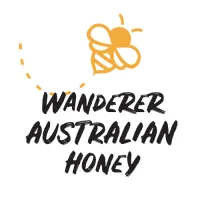If you go on a hunt for good quality honey, what would you need to know? So when I get asked what makes my honey different from others, I take a deep breath and provide a short explanation. This is because I realised that most people don’t know much about honey, other than the fact that it is sweet.

So here we go – I’m happy to share my short explanation about honey here, to allow honey lovers to understand honey a lot better:
- There are plenty of Honey sources such as Bush flowers, Tree flowers, Ground flowers, Seasons and Climates. Flowers will attract bees by perfume, colours, nectar and pollen. Pollen is the protein source for bees; the protein is essential for feeding brood, as, without protein, the hive loses its capacity of reproducing new bees. That’s how bee colonies may shrink from production size into survival size swarm. When bees have rich pollen in reasonable amounts, the hive can double in population and become very powerful. Some of the plants will have lots of nectar, while others will have next to none. Some of the plants will have lots of pollen, some much less. For bees to survive in good conditions, they need excellent combinations of pollen and nectar.
- What does honey consist of? The composition of honey varies from one floral source to another. The average composition of Australian honey produced from native and exotic plants is water 15.6%, fructose 42.5%, glucose 30.6%, sucrose 2.9%, minerals 0.16% and other constituents 8.24%. These are all-natural, while the concentration of each component can change from plant to plant, while other parameters such as rainfall, floods, cold weather, hot weather, drying winds, and the season of the year would have their influence.
- A beekeeper knows all the above, including the best locations to put their hives to get the highest yield of honey. Some beekeepers prefer not to move the bees to other areas and harvest only local seasonal honey, relying on the local flora.
- Every honey tastes differently. The flavour is changing as per the bees capacity to preserve the perfume of the flowers into the honey. Honey will also vary in colours and in consistency. Perfume, minerals, moisture (water content), and enzymes (that either the bees make with their salivary or enzymes brought from flowers) all play their part.
- When honey is appreciated and bees are loved and cared for by the beekeeper, flavours can differ. It resembles wine tastings – variety extends to as many flower types as we know and beyond.
- Beekeepers (like us) LOVE honey. We taste honey every day, sometimes a few times a day, to make sure the flavours and perfumes match our expectations.
- We recommend honey in good faith as a healthy product of nature. We trust our mates, the beekeepers, to do the same and recommend every good looking honey to be tasted. So every day, you might hit that amazing bite you have never had before.



